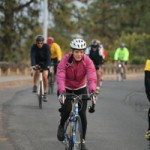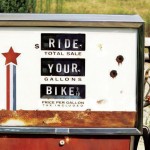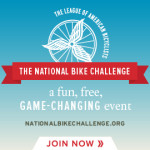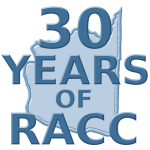Guest blogger Bill Thorness is the author of Biking Puget Sound: 50 Rides from Olympia to the San Juans. This story and accompanying images originally appeared on his blog, Biking Puget Sound.
The landscape around Puget Sound is connected by bridges, and they can be links to adventure. In my article in this Sunday’s Seattle Times, I briefly explore five of our biggest connecting spans. Here are more tips about riding the bridges discussed in the article, and images to whet your appetite.
I-90
The newer span (on the left) includes a two-way path safely removed from car traffic.
There’s a climb on each end, and on the Seattle side, when you exit the bridge you can either take a tunnel under the Mount Baker neighborhood to stay on the Mountains to Sound Greenway Trail into downtown Seattle, or you can climb a very steep (14 percent) half-block Irving Street and go either north or south to drop down to lakeside riding on Lake Washington Boulevard.

Aurora
A protected sidewalk on each side of the big bridge that connects Queen Anne to Fremont will get you across with thrilling city views.
You will also experience pedestrian or opposite-traveling bicycle traffic, which will cause you to stop and nudge past, because the passage is too narrow. And you’ll hit a couple of jarring steel plates that have heaved on one edge to create quite a bump.
Here are some views from the Ship Canal Trail under the Queen Anne side of the bridge, and one showing the Fremont Bridge and its recently added bike counter, with the Aurora Bridge looming in the background.

Tacoma Narrows
The newer span of the twin Narrows bridges sports a generous multi-use path, which offers great views of Mt. Rainier southbound on a clear day. On the Tacoma side, a short tunnel off the Scott Pierson Trail lets you know you’ve arrived.
Take the trail into Tacoma, or ride through the neighborhood northeast of the bridge up to Point Defiance Park, which has a winding, wooded, five-mile road to ride. From the nearby Ruston neighborhood you can drop down to the water level and ride a path and sidewalks along the water all the way to downtown Tacoma.


Deception Pass
The big attraction on this short bridge isn’t riding the bridge itself, which can be a bit scary; it’s the views from either end. When the oft-seen fog is absent, you’ll gaze down to swirling waters that look impossible to navigate. Scamper under the north end of the bridge on the short pedestrian trail and you can examine the incredible steel superstructure. Tie up your bike at Deception Pass State Park on the south end of the bridge and hike down to the beach for a distant view of the bridge.
When cycling this bridge, wait for a gap in the traffic, then take over the car lane for the short, quarter-mile ride. Don’t even attempt the sidewalk; it is much too narrow for bikes, and there will be plenty of pedestrian traffic on it.

Hood Canal
The bridge most area cyclists have never ridden is also one of the most interesting, and takes you farthest into new territory. It’s a scant eight miles from the Kingston ferry dock, but it feels like you’re exploring distant lands. After a much-needed rebuilding a few years ago, the bridge is now safe and comfortable to ride, if a bit loud with passing traffic. There’s a wide concrete shoulder, and the metal decking is covered with an asphalt carpet in the bike lane, with smooth joints on either end.
Explore the small parks on either end of the bridge, watch the boat traffic and shellfish diggers, and then continue on to Port Townsend, or head south in Kitsap County to Poulsbo or Bainbridge Island.

In the next edition of Biking Puget Sound, which I am researching now, I will include new rides across the Hood Canal and Tacoma Narrows bridges. The second edition has a planned release date of late 2014.





One Trackback
[…] Bridges: Portals to Somewhere | Washington Bikes […]